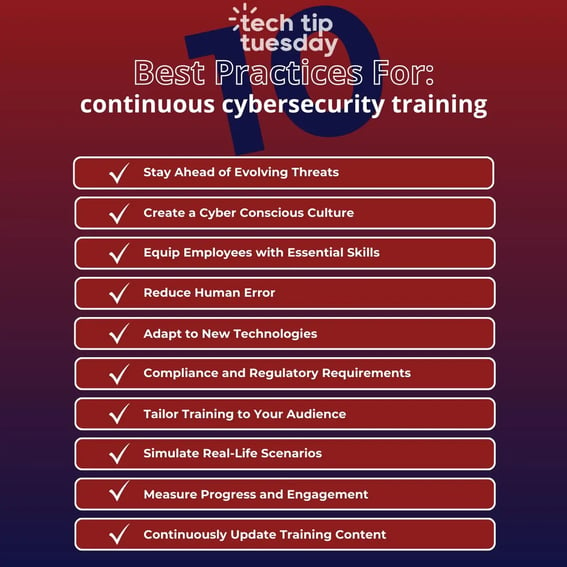Implement These 10 Best Practices for Effective Cybersecurity Training
1. Stay Ahead of Evolving Threats:
Cyber threats are constantly evolving, becoming more sophisticated and harder to detect. To ensure the security of your organization, it is crucial to stay up-to-date with the latest training techniques and strategies. By regularly updating your training materials and providing ongoing education to your team, you can equip them with the knowledge and skills needed to stay one step ahead of cybercriminals.
2. Create a Cyber-Conscious Culture:
Building a cyber-conscious culture within your organization is essential to maintaining a strong defense against cyber threats. This involves fostering a company-wide mindset of security awareness, where every employee understands their role in protecting sensitive information and preventing data breaches. By promoting a culture of vigilance and accountability, you can ensure that cybersecurity becomes a top priority for everyone in your organization.
3. Equip Your Team with Vital Skills:
Arm your employees with practical skills that are essential for safeguarding against cyber threats. This includes training them on how to identify phishing emails, which are one of the most common methods used by hackers to gain unauthorized access to sensitive information. Additionally, teaching your team how to manage sensitive data safely, such as using encryption techniques and secure data storage practices, can significantly minimize the risk of data breaches.
4. Minimize Human Errors:
Many cybersecurity breaches occur as a result of human mistakes, such as clicking on suspicious links or falling for social engineering tactics. By providing comprehensive training, you can educate your team about common pitfalls and teach them how to avoid them. This includes instilling good cybersecurity habits, such as regularly updating passwords, using multi-factor authentication, and practicing safe browsing habits.
5. Adapt to New Technologies:
As technology continues to advance, it is crucial to ensure that your team is equipped with the knowledge and skills to use new systems securely. This includes providing training on the proper use of cloud-based platforms, mobile devices, and other emerging technologies. By staying ahead of the curve and proactively training your team on new technologies, you can prevent potential vulnerabilities and protect your organization from cyber threats.
6. Comply with Regulations:
Depending on your industry, meeting cybersecurity regulations may be essential to avoid legal and financial consequences. By providing regular training, you can ensure that your organization remains compliant with relevant regulations and standards. This includes training employees on data protection laws, privacy regulations, and industry-specific security requirements. By keeping your team well-informed about compliance obligations, you can minimize the risk of non-compliance and protect your organization from potential penalties.
7. Customize Training to Your Audience:
Every department and role within your organization may have different levels of cybersecurity knowledge and specific training needs. By tailoring your training programs to the specific needs of different departments and roles, you can ensure that each employee receives the training they require to effectively protect your organization's sensitive information. This may include providing advanced training for IT professionals and basic cybersecurity awareness training for employees in non-technical roles.
8. Simulate Real-Life Scenarios:
Practice is essential for developing effective cybersecurity skills. By conducting simulated phishing attacks and real-world scenarios, you can provide your team with hands-on experience in dealing with cyber threats. This allows them to learn by doing and prepares them to respond effectively in real-life situations. By regularly conducting simulated exercises, you can reinforce training concepts and identify areas for improvement, ultimately strengthening your organization's overall security posture.
9. Measure Progress and Engagement:
To ensure the effectiveness of your cybersecurity training programs, it is important to measure progress and engagement. This can be done through various methods, such as quizzes, assessments, and feedback surveys. By tracking the performance of your employees and regularly evaluating their cybersecurity awareness, you can identify areas that need improvement and provide additional training where necessary. Recognizing and rewarding outstanding cybersecurity awareness can also help motivate your team to actively participate in training and remain vigilant against cyber threats.
10. Keep Content Fresh:
Cyber threats are constantly evolving, and new attack techniques are regularly emerging. To ensure the relevance and effectiveness of your training materials, it is important to regularly update your content. This includes incorporating the latest best practices, industry trends, and potential dangers into your training programs. By keeping your training materials up-to-date, you can provide your team with the most relevant and actionable information, empowering them to effectively protect your organization against evolving cyber threats.


